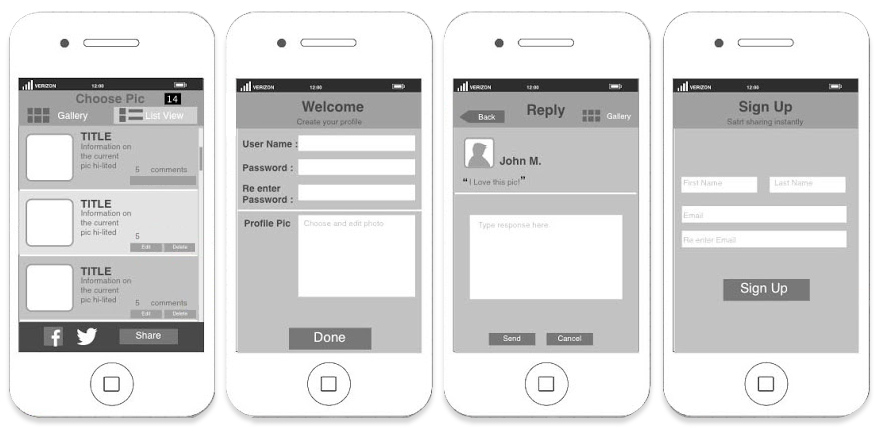In some cases, we have found that companies sometimes want to skip the process of wireframing to quickly jump into their Interface Design and start programming their mobile application. We work with our clients to help them understand why wireframing the app is so important and how it helps. They quickly change their minds into accommodating the time and the funds to make sure the wireframing happens.
First, let’s define what wireframing is. During the process of wireframing, Echo Interaction Group documents functionality and app features using wireframes to provide an easy way to validate the usability of an application. Wireframes act as storyboards and assist with defining workflow and functionality without the distraction of visual design and graphic elements. Wireframing allows us to perform deeper and more valuable explorations of multiple design ideas, concepts, and workflows, resulting in an outline of an application that is fully-functional, intuitive, and user friendly.

To organize and effectively execute a user experience, wireframing is a critical step in the mobile application design process. One wouldn’t be able to build a house without the floor plan or the blueprint, could they? Prior to establishing a color palette, a design style, a theme, or going into programming, the wireframes serve the purpose of accounting for all features. Positioning the elements in wireframe document and describing what each element does, gives clients a clear view of how things will look in space and how they will work in transitioning from screen-to-screen.
A feature film could be another example in relating it to the wireframing process of an app. Consider the basic steps of creating a film:
- Writing the script and the screen play (Similar to a Scope of Work. Descriptions and list of features and functionality of the mobile app).
- Scene organizing and shot list (Flow-charting and workflow of the app).
- Storyboarding the shots (Wireframing and establishing the guide of the app’s User Experience).
- Shooting the movie (Designing the App – Interface Design).
- Editing or post producing the film (Programming the mobile application).
Skipping the wireframing process would be ineffective in developing a mobile app. It is difficult, if not impossible, and confusing to develop an application without investing the time wireframing it. When skipping this process, nine out of ten times, the project ends up going out of scope and out of budget, with the additional change orders that are not pleasing to hear when they could’ve been avoided by establishing the wireframes. We also spend time building strong relationships with our clients by making them aware of how important each part of the process is.
Here at Echo Interaction Group, it’s important that projects we work on go out the door on time, on budget and with a big success rate. We will continue to deliver enterprise-level applications due to our proven process of developing top mobile applications for both Apple and Android mobile devices.

